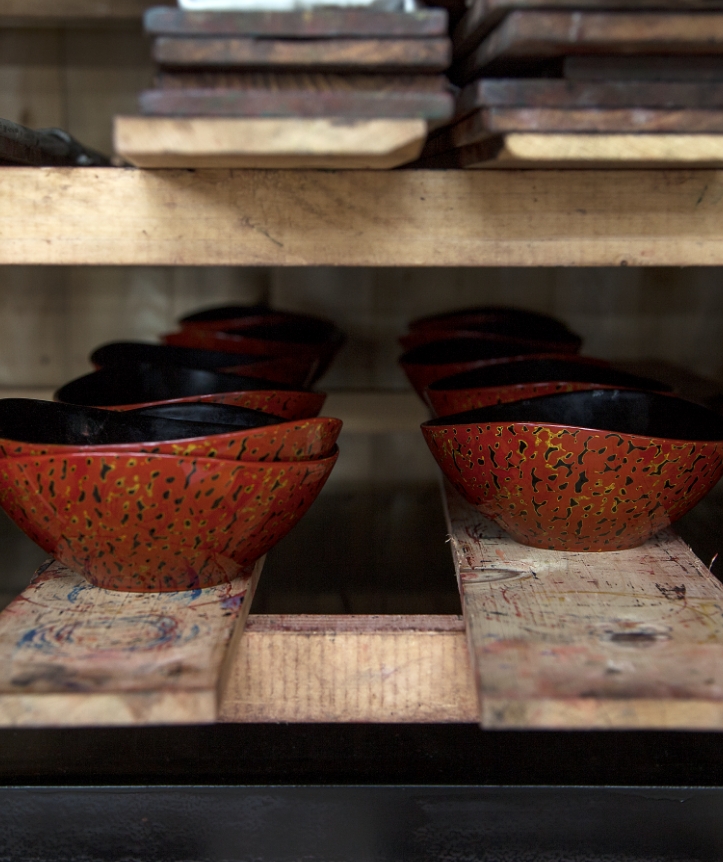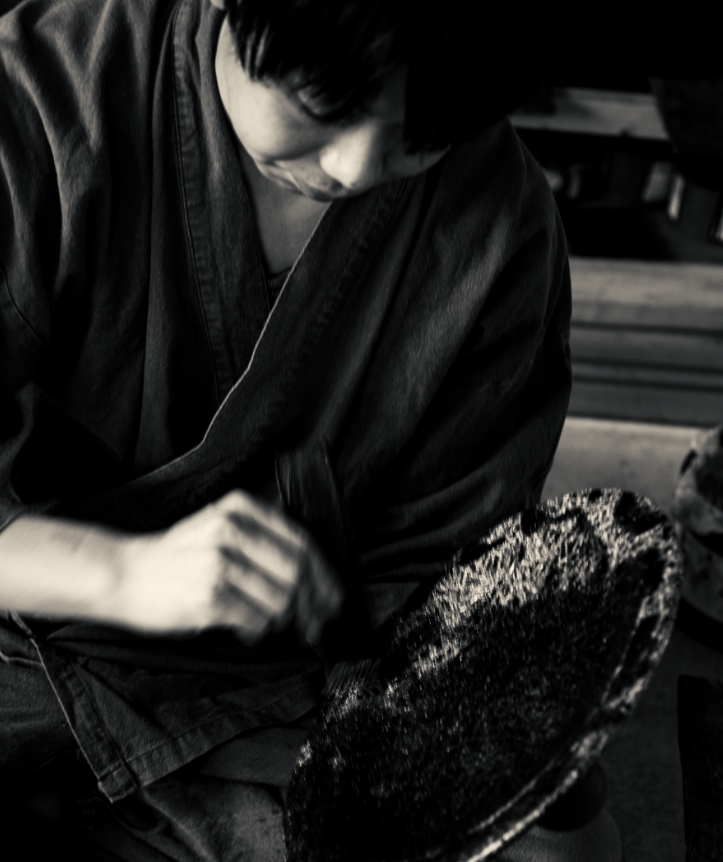About Tsugaru NuriIntroducing the history of Tsugaru Nuri
About Tsugaru Nuri
Tsugaru Nuri is the traditional lacquerware of the Tsugaru region in Aomori prefecture, centralized in Hirosaki city. Lacquerware crafts in Tsugaru has an extensive history dating back to the Edo period (1603 ~1868). The four styles practiced today are the Kara-nuri, Nanako-nuri, Monsha-nuri, and Nishiki-nuri.
"Tsugaru Nuri" became the official name of the lacquerware in 1873 for the exhibition in the Vienna World Exposition with the purpose to identify the origin of the craft. Tsugaru Nuri is the only traditional craft in Aomori prefecture designated by the Japanese Ministry of Economic, Trade and Industry. As such, Tsugaru Nuri is the only traditional craft in Aomori to be established as an industry.
Today, Tsugaru Nuri is well recognized in Japan and abroad as the traditional craft of Aomori prefecture.

The History of Tsugaru Nuri
The beginning of Tsugaru Nuri can be traced back to mid-Edo period during the reign of the 4th leader of Hirosaki clan, Tsugaru Nobumasa (1646~1710). Nobumasa gathered many artisans from across the nation to develop the industries in Tsugaru region. Among these artisans were Gembe Ikeda and his son, Gentaro. They developed a new technique in creating lacquerware, which is said to be the origin of Tsugaru Nuri. Over the generations, Tsugaru Nuri evolved as new designs were developed. The lacquerware became an important craft for the Hirosaki clan as it was often presented as gifts to the daimyos and lords of the shogunate government and the Imperial Court.
In 1873, Tsugaru Nuri became recognized worldwide following the exhibition at the Vienna World Exposition and Tsugaru Nuri grew into a local industry.

Crafting Process
The crafting process of Tsugaru Nuri involves 48 steps. The base is made of wood, typically Japanese cypress. A sheet of cloth is applied to the wood base and covered with urishi (lacquer) base coat for durability. Colored lacquer is applied over many coats and polished after every coat. The final step involves top quality Japanese lacquer and polishing, creating a durable and refined lacquerware.